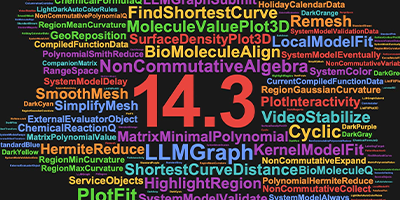Studying Wolfram Science in the Summertime

Last year was the 10th anniversary of the publication of A New Kind of Science and the 10th installment of the Wolfram Science Summer School (formerly the NKS Summer School). To read more about the anniversary, check out the series of blog posts by Stephen Wolfram, starting here.
The Wolfram Science Summer School is a three-week research school focused on advancing student projects in the field of complex systems. Students tend to be undergraduates, graduates, post-docs, professionals, and professors. Summer school students have historically represented a wide array of topical areas, including (but not limited to): computer science, mathematics, physics, biology, ecology, architecture, music, philosophy, political science, and economics.
I’ve been helping out with the summer school since 2008. That first year up in beautiful Burlington, Vermont, I was lucky enough to be a student while I helped coordinate the event. Since then I’ve published a paper based on my 2008 project, and have worked on NKS methods as applied to music, social networks, and epidemic spread.
The 11th annual Wolfram Science Summer School takes place July 1–19, 2013, at Bentley University in Waltham, Massachusetts, USA.
We’re currently accepting applications. Having read Stephen Wolfram’s A New Kind of Science is a requirement for participation. If you haven’t read the book, you can read it online for free or download the iPad app. We are also looking for participants who know or are capable of learning Mathematica, since all projects are completed using Mathematica.
Interested in participating in this year’s installment of the Wolfram Science Summer School? Apply here »
Last year we had a great group with some particularly good projects, some interesting from the conceptual get-go and others that produced surprisingly interesting results. The project notes below are from Todd Rowland, the Academic Director of the Wolfram Science Summer School.
Perceptual Analysis of Physical Image
Chen Song explored the space of dithering algorithms to better understand human visual perception. This was the first systematic survey, despite being used in practice for computer graphics for some time, and for scientific purposes.
The perceptual analysis algorithm can model the distribution of human attention to different parts of an image, as illustrated below.

(Chen included many more interesting results in her project notebook, in which every student submits their final results.)
Granular Sound Synthesis Using Cellular Automata and a Relative Harmonic Network
Eli Bierman worked on a music project, an exploration of the space of sounds with the goal of finding novel methods of sound synthesis. Eli converted cellular automata to sound using granular synthesis and a set of harmonically related frequencies. Here is Eli’s example “Granular CA Synthesis” from the Wolfram Demonstrations Project:

Arbitrary Integer Value CA as Energetic Lattice Analog
Pete Giovagnoli explored a new space based on arithmetic functions and found a wide variety of unexpected behaviors never seen before. There is some prospect that some of it may be understandable due to its mathematical nature, but more importantly it opens up a whole new space to explore further.
A selection from Pete Giovagnoli’s results:
Starting from initial condition {1, {0}}, we take the function GCD[GCD[#1[[2]], #1[[3]]] + #1[[1]], 2 #1[[2]]] & as the rule for an integer-valued CA. The result:

![GCD[GCD[#1[[2]], #1[[3]]] + #1[[1]], 2 #1[[2]]] & GCD[GCD[#1[[2]], #1[[3]]] + #1[[1]], 2 #1[[2]]] &](https://content.wolfram.com/sites/39/2013/02/WolframSchool-Out1.png)
Replacing all values above 1 with 0, we see that this is a perfect analog of Rule 30:

![]()
The difference lies in the quiescent triangle areas of the pattern, which are filled with rows of increasing powers of 2.
Visual survey leads us to contend that integer-value CAs built in this paper’s method can reproduce all the elementary cellular automata.
If you have interest in participating in this year’s installment of the Wolfram Science Summer School, be sure to apply online today.



Comments